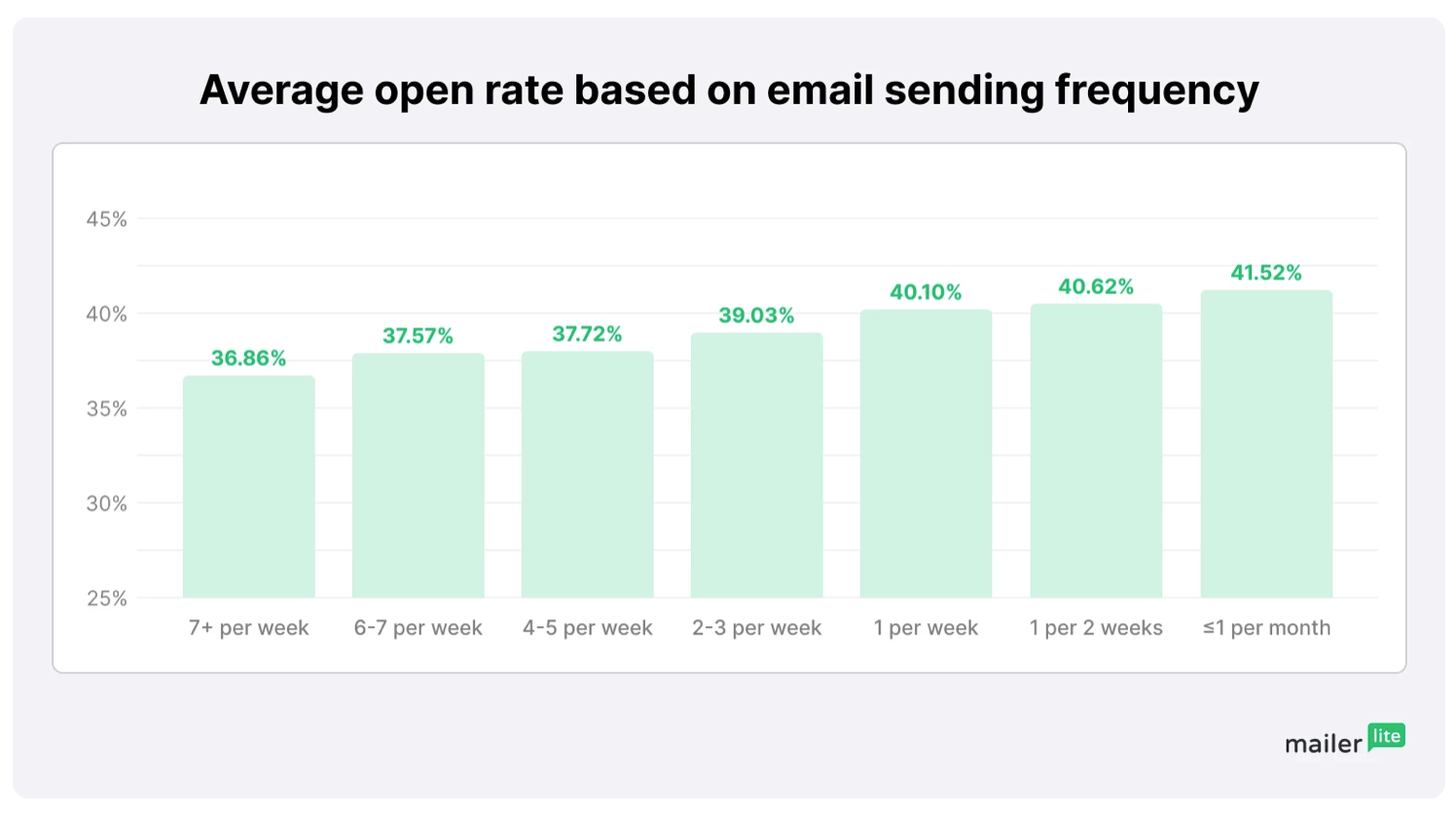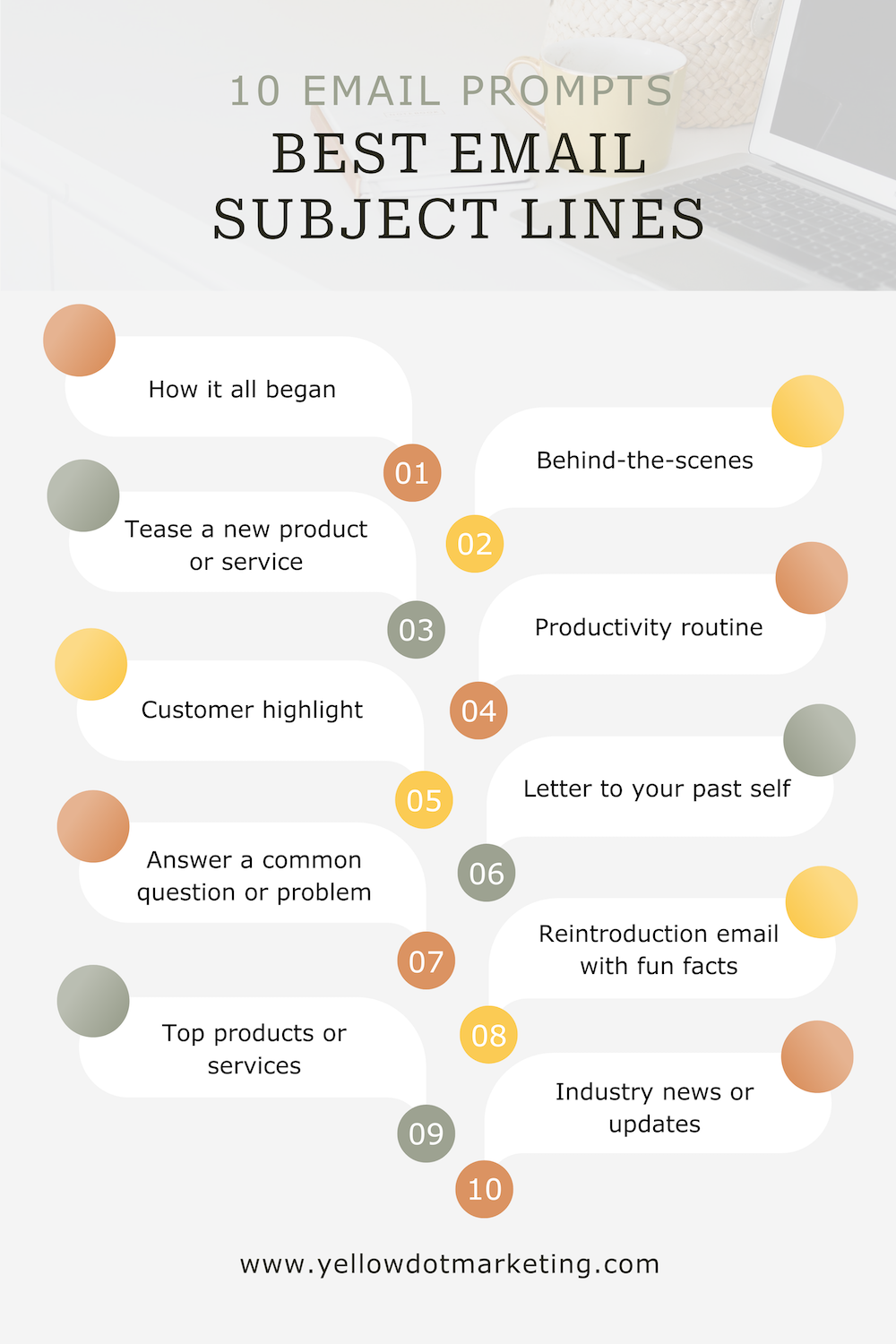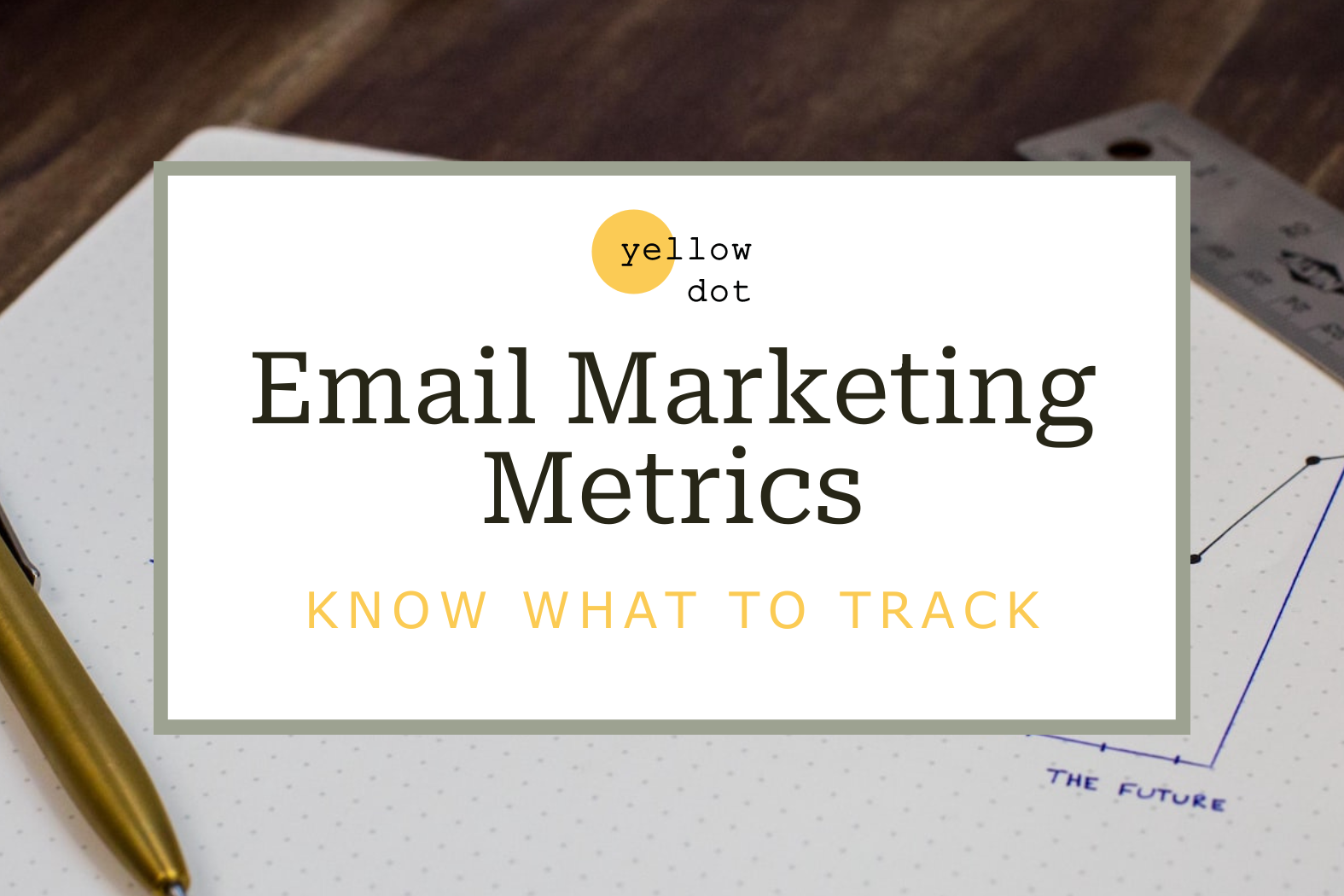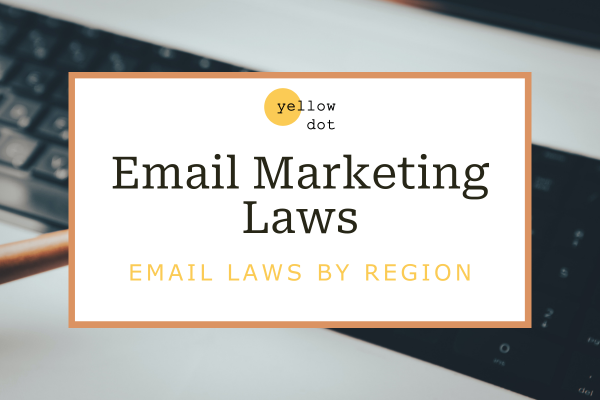With a return of investment that is 40% higher than other digital marketing tools, email marketing is one of the most effective ways to connect with your audience and drive sales. But what do you write to your subscribers? And what are the best email subject lines to get subscribers to open your emails, especially when they receive dozens of emails every day? In an increasingly digital world, your emails need to stand out.
The key to a successful email campaign is a compelling subject line that entices the reader to open your message. In this blog post, we’ll cover the best email subject lines to engage subscribers and boost your open rates.
How often do you need to send emails to your email list?
Before we dive into the best email subject lines, let’s talk about how often you should be sending emails to your subscribers.
The frequency of your emails depends on your business and your audience’s preferences. However, as a general rule, you should aim to send at least one email per week to stay on top of the mind with your subscribers. You want to maintain your presence. It will also provide more data for you to analyse so you can see where your email marketing strategy is performing best.
If you’re in a sales or launch phase, you can send more frequent emails. On the other hand, if you’re struggling to come up with enough content, you can aim for a monthly round-up style email.
Sending regular emails to your subscribers helps:

Build trust with audience

Showcase your authority

Increase sales & customer retention
Theres’s some great information in this article from MailerLite about the number of emails you send and the impacts that has on your open and click through rates.

How to write engaging content
The subject line is just the beginning – you also need to deliver engaging content that keeps your subscribers interested and prompts them to take action. If you want to learn more about the strategy behind creating great content you can read more about content pillars here.
Here are some factors to consider to help you how to write engaging content:
Personalisation: Personalisation is one of the most effective ways to increase email engagement. By addressing the recipient by name, you create a sense of intimacy and connection that can’t be achieved with a generic greeting. Personalisation can also extend beyond just the name, you can personalise the content of the email to cater to the interests or past behaviour of the recipient.
Example: “John, Here’s a special offer just for you.”
Urgency: Creating a sense of urgency can motivate recipients to take action quickly. You can create urgency in your subject line by emphasising the limited availability of your offer or time-sensitive information.
Example: “Last chance to save 50% on your purchase.”
Curiosity: A subject line that piques the recipient’s curiosity can compel them to open the email to find out more. This could be in the form of a teaser or a hint at valuable information that is contained within the email.
Example: “You won’t believe what we have in store for you.”
Relevance: Relevance is key to capturing the recipient’s attention. By tailoring the subject line to the recipient’s interests or needs, you can increase the likelihood of them opening the email.
Example: “5 tips to improve your golf swing.”
Humour: Humour can help your email stand out in a crowded inbox and can help to create a positive association with your brand. However, humour is subjective, so it’s important to understand your audience and make sure your humour aligns with your brand’s voice and values.
Example: “Open up, it’s not a cat video (we promise).”
When writing email content write like you’re speaking to a friend. Keep your emails concise and to the point. Use eye-catching visuals and formatting to make your emails more visually appealing. Always provide value and offer something that the subscriber can’t get anywhere else.

Best email topics – prompts to get started
The best email topics are the ones that will get your subscriber not only to open and read your email but to take action and drive sales. Your email topics inform your subject lines.
It can be hard to come up with engaging email topics. This is something I work on with my clients when they sign up for the email marketing packages for the Done For You service, when we build an email marketing strategy that provides them with endless content ideas
To help you get started with writing engaging emails, here are 10 email topic prompts that you can personalise and use for your industry and niche:
How it all began: Share the story of how and why your business began. Tell people what keeps you inspired and motivated. Link to a ‘then & now’ style comparison social or blog post.
Behind-the-scenes: Show your subscribers the behind-the-scenes in your business. You can include a photo in your email or link out to a behind-the-scenes video or social post to show something people wouldn’t normally know about your business.
Tease a new product or service: Let your subscribers know about a new product/service you’re going to launch with a teaser email. Include a poll with links asking people to guess what the new product/service will be.
Productivity routine: Share your productivity routine. Break down your day or a specific task and show how you tackle them to maximise your efficiency. Link to a blog or social post breaking down your routine and methods.
Customer highlight: Showcase a previous client and demonstrate the positive transformation your products/services have provided. Link out to the customer’s website or social media account to further validate your work.
Letter to your past self: This is a great storytelling email to highlight some advice you wished you’d listened to or things you wish you’d done differently. Link out to an old social media post from the early days of your business.
Answer a common question or problem: Answer a question that you are frequently asked. Help to bust a myth and clarify common misconceptions and objections you regularly receive about your business or niche. Link to a blog post that backs up or adds value to the question you are answering.
Reintroduction email with fun facts: These don’t have to be boring facts about where you live and what you do. Humanise it. Try to share something more personal or quirky that people are unlikely to know already. Link to the About section on your website for people to find out more about you and your business.
Top products or services: Highlight your most popular offers and explain their benefits and the transformations they provide for your clients. Link to a webpage with the offer and how someone can purchase.
Industry news or updates: Sharing relevant news and updates can demonstrate your knowledge within your niche. Link to a blog post you’ve written about this fact or another website where you learned the information.
These prompts can be a great starting point for crafting engaging emails. You can use these email prompts as your guideline on how to write engaging content. Don’t forget to personalise them to suit your industry and niche. Some additional ideas for email topics include:
- Upcoming industry trends
- Customer success stories
- How-to guides and tutorials
- Personal stories and anecdotes
- Surveys and polls to gather feedback from your subscribers

Best email subject lines for engagement
The best email subject lines grab your subscriber’s attention, leading to increased click-through rates and improving conversion rates. Here are some of the best email subject lines that you can apply in any niche or business:
- “The secret to [enter customer pain point]” – This subject line promises to reveal a solution to a customer pain point or challenge, which can be very compelling for subscribers who are looking for answers to their problems.
- “If you want to [insert solution relevant to niche] then try this!” – This subject line offers a specific solution to a problem or challenge that is relevant to the subscriber’s niche or interests, which can create a sense of urgency and curiosity.
- “3 mistakes you’re making with [insert niche]” – This subject line highlights common mistakes that subscribers may be making in their niche or area of interest, which can make them feel like they need to read the email to avoid these mistakes.
- “Stop! Read this if you need clarity on [insert pain point]” – This subject line appeals to subscribers who are looking for clarity on a particular pain point or challenge, and creates a sense of urgency by using the word “stop”.
- “Wait, I need your help with [insert an issue you need help with]” – This subject line creates a sense of personal connection and implies that the sender needs the subscriber’s help, which can be very engaging and build a stronger relationship between the sender and the subscriber.

Good email subject lines for introduction
Your introduction email is your first subscriber’s first impression of your presence. It is important to present your voice and personality in a friendly and engaging way to your new subscribers. Here are good email subject lines for introductions:
- Welcome to our community! 🎉
- Let’s get to know each other
- Thanks for subscribing!
- 📣Get ready for great content
- You’re in! Let’s stay in touch.
Best email subject lines for sales
Your engagement should lead to sales conversion. You can do this by piquing your subscribers’ curiosity and leaning into their sense of urgency, particularly if you have promotions that would be enticing and useful for them. Your subject lines should encourage your subscribers to take action. If you want to convert your email engagement to sales, here are the best email subject lines for sales that you can consider:
- 🛑 Last chance to save
- Don’t miss out on our sale
- Limited time offer ⌛
- Here’s your exclusive discount!
- ⚠️ Act now and save
Conclusion
Crafting the best email subject lines lines that engage subscribers is an essential part of any successful email marketing campaign. To stand out in crowded inboxes, you need to grab your reader’s attention and provide them with something of value. Whether it’s solving a pain point, offering a solution, or simply piquing their curiosity, your subject line is your first impression and can make all the difference.
The best email subject lines are those that relate to your business and the problem you solve. By following the tips and examples in this blog post, you can create the best subject lines that resonate with your audience and inspire them to open and engage with your emails.
Remember to test and optimise your subject lines for maximum effectiveness, and always put your reader’s needs first.
🟡 With a little creativity and strategy, you can increase your click-through rates and conversion rates, and ultimately drive more sales for your business.
Plan 12 months of content
Do you struggle with what to write to your subscribers each week?
You dread writing emails and keep putting it off.
Consistency is key with email marketing – the more you write to your audience the more data you will have to work out what they actually want to receive from you.
Download this free Trello board template to help you organise your content ideas and make the whole email marketing process easier.
Take control of your email marketing and feel confident that you won’t run out of email subjects ideas again!

What are content pillars?
What if I told you there was an easier way to create and organise your content? Read more…

Email Marketing Metrics
An engaged email list can help grow your business, know what to measure. Read more…
Email Marketing Laws
Understand email marketing laws, avoid penalties, protect your reputation and build customer trust. Read more…


